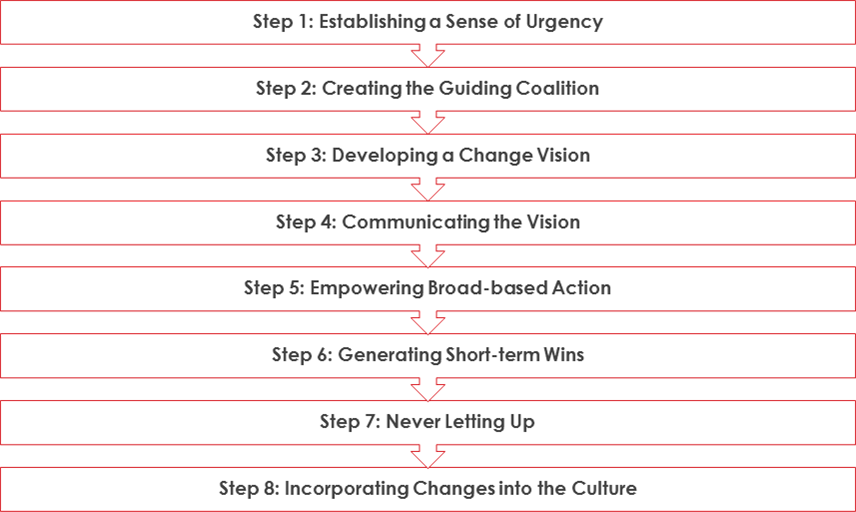This is the second part in the series on how to make CRM implementations stick in an organization by using the 8 step method described by Dr. John Kotter of Harvard.
The first posting treated the fact that many organization do not consider a CRM implementation a change to the organziation of such a magnitude that it requires a change mangement approach such as the 8 step method. I think that it gives ample evidence for the reasons for why this is not so and that as many as a quarter of all failed CRM Projects could probably have been helped with better change management.
Kotter describes the following 8 step method can in broad terms be described in the following picture:
 |
| The Kotter 8 steps of Change |
The method required that you complete each step before moving to the next step. It is hence not a toolbox from which you can pick and choose the things which are easy to implement.
As the method is very general and treats many types of organizational changes I will attempt to give some examples of typical problems and suggestions from a CRM implementations perspective.
In the following parts I will discuss the steps in detail, but in short they are:
Step 1: Establishing a Sense of Urgency – many organizations have lots on their tables. If you want your CRM Project to be prioritized and have the resources required, you had better make sure people understand that they need the new CRM system RIGHT NOW. Every week without it is $$$ lost.
Step 2: Creating a Guiding Coalition – You need the backing of the right people to have a successful Project. A CRM Project without the CEO, Head of Sales, Head of Customer Service, CIO will have some issues.
Step 3: Developing a Change Vision – You need to sell the CRM implementation to the people who are going to use it. You need to create a very clear and appealing vision of where the implementation is going.
Step 4: Communicating the Vision – The vision is not going to distribute itself to the users. Create an internal marketing plan for how to get the message out to all users.
Step 5: Empowering Broad-based Action – Make sure that who want to act on the vision can and are not hindered by technology, old procedures, backward colleagues etc.
Step 6: Generating Short-term Wins – Plan for short term wins. Otherwise the risk of being stopped in your tracks Before generating anything substantial is large.
Step 7: Never letting up – Make sure to keep the pressure. There might be bugs, some people might revert to Excel or stop using the system. Monitor usage.
Step 8: Incorporating Changes into the Culture – Not until the CRM system is truly a part of the Company Culture, a part of the management meeting, board meetings, sales meetings, will you have fully succeeded.
The next part in this series will be on the first step of this, the important part of establishing a sense of urgency.
You can find Dr. John P. Kotter’s website here:
http://www.kotterinternational.com/about-us/who-we-are/john-kotter/
If you would like to read his excellent book, it is quite easy to find, for instance here: http://www.amazon.com/Leading-Change-With-Preface-Author/dp/1422186431/ref=sr_1_1?ie=UTF8&qid=1414356275&sr=8-1&keywords=Kotter
Gustaf Westerlund
MVP, CEO and owner at CRM-konsulterna AB
www.crmkonsulterna.se


Recent Comments